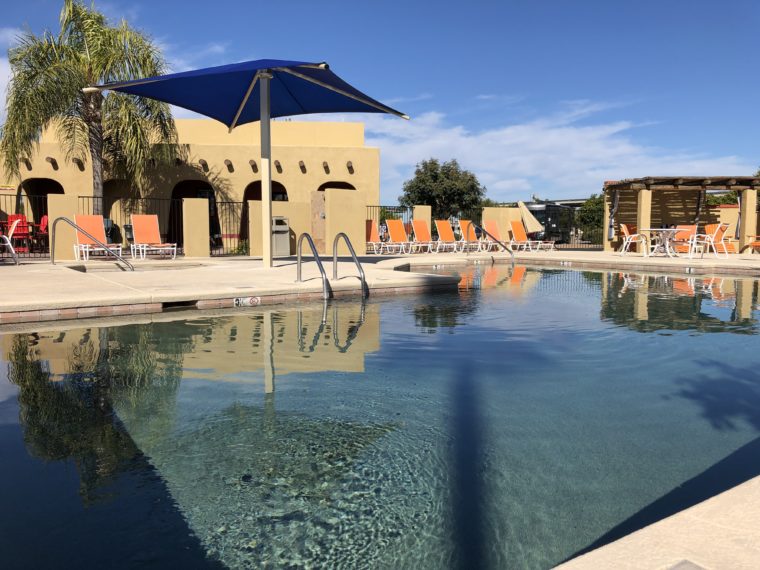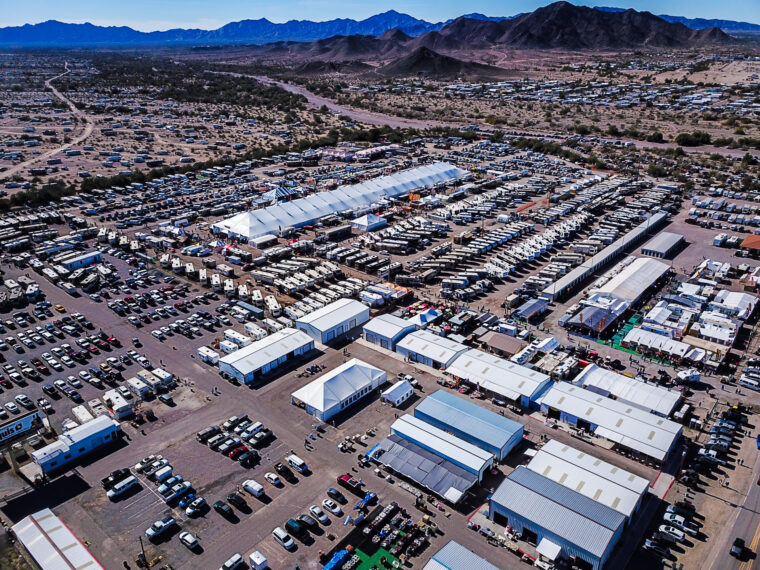As the state with the most miles of roadway, Texas is an excellent place for RV travel, and Texas’ state parks offer plentiful camping options throughout the state.
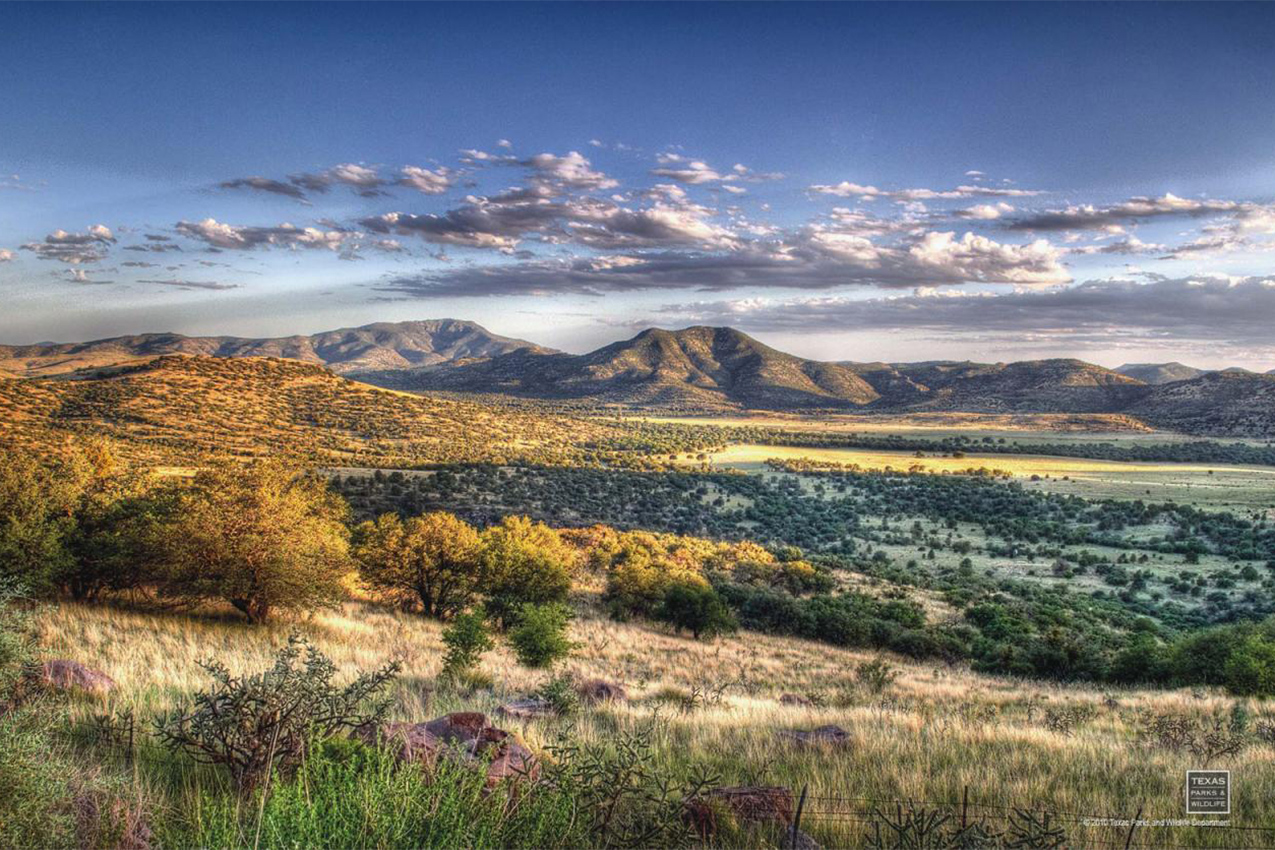
About Texas State Parks
From the Gulf Coast beaches to the endless plains, rolling Hill Country, and desert mountains, the Texas state park system covers a lot of geography. There are 89 state parks that include forests and historic sites, creating an option for just about any visitor. Many of these parks are short drives from major cities, while some take campers to more remote areas. The size of the state and its land diversity make Texas’ state parks stand out. To help narrow your choices, use the Texas State Park app to learn more about each park, download trail maps, and make reservations. Both local and out-of-state visitors can request a free travel guide for more info.
The Texas Parks & Wildlife Department manages 29 parks that were built by the Civilian Conservation Corps (CCC), a part of New Deal work programs. Present day, these parks tell the unique history and stories of those that built them. The Texas Buffalo Soldiers Program brings even more history to this state park system through educational events and reenactments.
Texas Parks sells a variety of passes including the 1-year Texas State Parks Pass ($70) which grants unlimited access for the passholder and a guest to all parks. It also offers discounts on camping. Qualifying seniors, veterans, and disabled persons receive access to a free Texas Parklands Passport (discounts vary). Some parks also sell Restricted Annual Activity Passes which gives passholders access to activities like swimming or fishing.
Permits are not required to fish at Texas state parks, meaning this is a free activity (outside of any entrance charges). Workshops are available at state parks to learn more about camping through Texas Outdoor Family. And kids can enjoy activities through the Texas State Junior Ranger program.
The Texas state parks system also has a unique Dark Skies Program with four International Dark-Sky Association-certified Dark Sky Parks: Big Bend Ranch, Enchanted Rock, Copper Breaks, and South Llano River; and two IDA Dark Sky Sanctuaries. Learn more about stargazing through star parties, self-guided constellation tours, and light pollution educational programs.

Booking a Visit to a Texas State Park
Due to the size of the state, visitors to Texas will need to do some research to figure out where they want to go and which parks need to be booked for camping in advance. Reservations open up to 5 months in advance and you can change or cancel site reservations until 5 a.m. on the day of arrival. If you need to change or cancel your reservation, there is a $10 fee (or the amount paid, excluding entrance fees, whichever is less) if done more than 5 days in advance; or more if you cancel or reduce the length of your stay closer to your reservation date.
It’s easy to make a reservation online on Texas State Parks’ website. The reservation website even has a handy “Camping This Weekend” feature that shows all state park campgrounds available for the upcoming weekend. Phone booking is available during normal business hours at 512-389-8900.
Some Texas state parks have accessible facilities—view a full list here—and accessible campsites can be reserved online or over the phone.

What to Expect at Texas State Parks
Most parks offer RV camping with both electric and full hookups. Most of the electric-only setups cost $20 per night, with full hookups costing $25 per night. Check-in time is at 2 p.m. and checkout time is at 12 p.m. for campsites. You can view each park’s entrance fees on its website. If you’re not camping, consider purchasing a “Save the Day” pass (available online) for popular parks so you have guaranteed entry on the day of your visit.
Guests can expect easy access to nearby trails, waterways, and historic sites. Plus, most Texas state parks allow dogs, so you can enjoy your RV camping trip with your furry companion. Generally you can stay for up to 14 consecutive days at a Texas State Park.
Quiet hours at campsites are from 10 p.m. to 6 a.m. and public display or consumption of alcohol is prohibited. See the full list of park regulations here.
Best Texas State Parks for RVers
While the options may seem endless, there are some stand-out campgrounds that are popular in the state.
- Starting on the coast, Mustang Island State Park allows RVers the chance to camp near the Gulf of Mexico.
- In Central Texas, Lost Maples State Natural Area is a popular destination that’s not far from the cities of Austin and San Antonio. The park is known for its maple trees and is particularly popular in the fall.
- For desert mountains and the isolation of far west Texas, visitors can stop at Davis Mountains State Park near the tourist town of Marfa.
- Outside El Paso, visitors can find Hueco Tanks, which has pictographs from thousands of years ago and is a popular stop for rock climbers.
- Finally, heading north to the Texas Panhandle, Palo Duro Canyon near Amarillo brings the West alive with its landscape and the popular trail to Lighthouse Rock.
Editor’s note: This story has been updated to reflect a correction about entrance fees for Texas State Parks.


